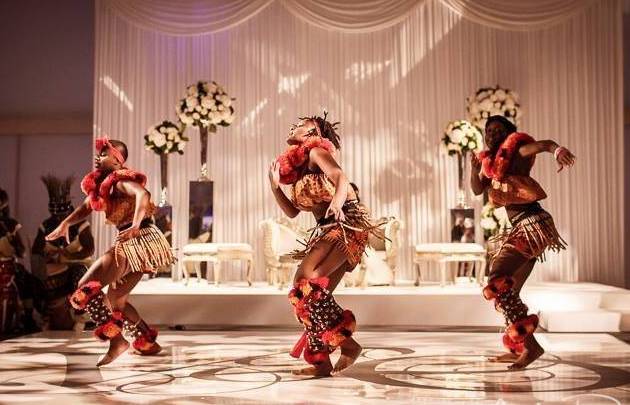Master dancers and drummers are particular about the learning of the dance exactly as taught. Children must learn the dance exactly as taught without variation. Improvisation or a new variation comes only after mastering the dance, performing, and receiving the appreciation of spectators and the sanction of village elders.
"Musical training" in African societies begins at birth with cradle songs, and continues on the backs of relatives both at work and at festivals and other social events. Throughout western and central Africa child's play includes games that develop a feeling for multiple rhythms. Bodwich, an early (circa 1800) European observer, noted that the musicians maintained strict time (i.e. concern for the basic pulse or beat), "and the children will move their heads and limbs, while on their mother's backs, in exact unison with the tune which is playing."
The sounding of three beats against two is experienced in everyday life and helps develop "a two-dimensional attitude to rhythm".
The most widely used musical instrument in Africa is the human voice. Nomadic groups such as the Maasai do not traditionally use drums yet in villages throughout the continent the sound and rhythm of the drum expresses the mood of the people.
In an African community, coming together in response to the beating of the drum is an opportunity to give one another a sense of belonging and of solidarity, a time to connect with each other and be part of a collective rhythm of the life in which young and old, rich and poor, men and women are all invited to contribute to the society.
Shoulders, chest, pelvis, arms, legs etc., may move with different rhythms in the music. Dancers in Nigeria commonly combine at least two rhythms in their movement, and the blending of three rhythms can be seen among highly skilled dancers.
Articulation of as many as four distinct rhythms is rare. They may also add rhythmic components independent of those in the music. Very complex movements are possible even though the body does not move through space. Dancers are able to switch back and forth between rhythms without missing movements.
The drumming represents an underlying linguistic text that guides the dancing performance but most meaning comes from nonverbal cues and metalanguage of the performers. The spontaneity of performance creates an impression of extemporaneity, yet it is not to emphasize the individual and bolster her or his ego but to preserve the community and mediate the audience and the performer interaction.





0 Comments